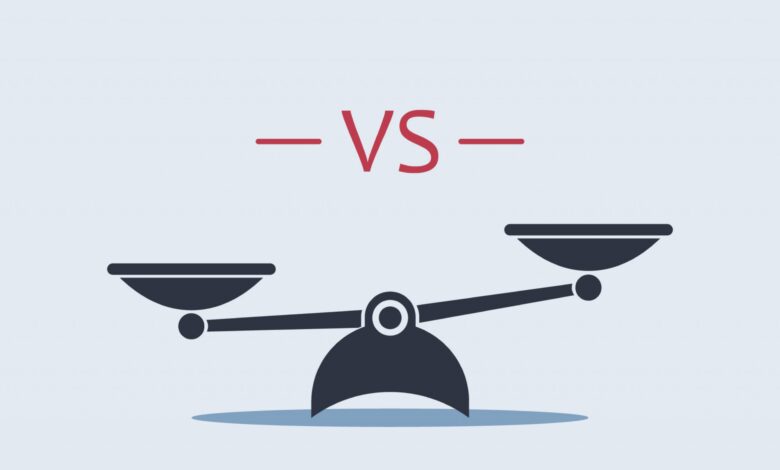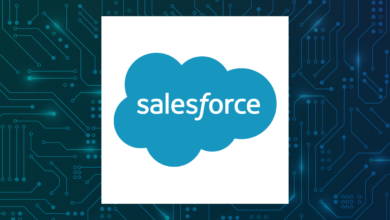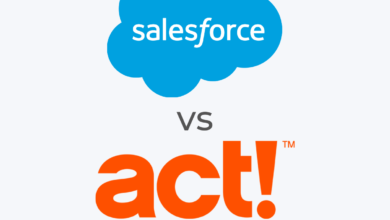CRM: Oracle (ORCL) vs. Salesforce (CRM): Buy, Hold, or Sell?

In this article, I evaluated two software stocks, Oracle Corporation (ORCL) and Salesforce, Inc. (CRM) to determine whether you should buy, hold, or sell these stocks. We believe CRM could be an ideal buy, while it could be wise to wait for a better entry point in ORCL.
The software industry is vital to economic progress and is set for continued growth due to technological advances, including artificial intelligence (AI), machine learning (ML), and cybersecurity, digital transformation initiatives, and the shift to cloud-based applications. Gartner forecasts worldwide software spending to reach $1.03 trillion in 2024, up 12.7% from the prior year.
Additionally, the high demand for various software applications to speed up and simplify business operations using advanced IoT technology and cloud-based solutions is expected to support the application development software market’s growth.
As per a report from Grand View Research, the global application development software market is projected to grow at a CAGR of 24.3%, reaching a revenue of $733.50 billion by 2028.
Moreover, investors’ interest in software stocks is evident from the SPDR S&P Software & Services ETF (XSW) 16.1% returns over the past year.
CRM is a clear winner in nine-month price performance, with a 21.2% gain compared to ORCL’s marginal decline. CRM climbed 31.7% over the past six months compared to ORCL’s 8.8% gain. In addition, CRM gained 40.2% over the past year, while ORCL surged 24.1%.
Here are the reasons why we think CRM could perform better in the near term:
Recent Developments
On April 18, 2024, ORCL and Fujitsu Limited collaborated to deliver sovereign cloud and AI capabilities that help address the digital sovereignty requirements of Japanese businesses and the public sector.
With ORCL Alloy, Fujitsu will expand its Hybrid IT offerings for Fujitsu Uvance, which helps customers grow their businesses and solve societal issues. Fujitsu can operate Oracle Alloy independently in its data centers in Japan and have additional control over its operations.
On the same day, ORCL announced that it plans to invest more than $8 billion over the next ten years to meet the growing demand for cloud computing and AI infrastructure in Japan. The investment will grow ORCL Cloud Infrastructure’s (OCI) footprint across Japan.
On March 6, 2024, CRM announced the availability of Einstein 1 Studio, a set of low-code tools that enables CRM admins and developers to customize Einstein Copilot, the conversational AI assistant for CRM, and seamlessly embed AI across any app for every customer and employee experience.
Recent Financial Results
For the third quarter, which ended on February 29, 2024, ORCL’s total revenue increased 7.1% year-over-year to $13.28 billion, and its non-GAAP operating income rose 11.8% from the year-ago value to $5.92 billion. The company’s non-GAAP net income and non-GAAP EPS were $3.98 billion and $1.41, up 17.7% and 15.6% from the prior-year quarter, respectively.
However, the company’s total current liabilities stood at $24.89 billion as of February 29, 2024.
During the fourth quarter that ended January 31, 2024, CRM’s total revenues increased 10.9% year-over-year to $9.29 billion. The company’s non-GAAP net income and non-GAAP EPS grew 35.5% and 36.3% from the previous year’s quarter to $2.25 billion and $2.29, respectively. Its free cash flow was $3.26 billion, up 27% year-over-year.
Past And Expected Financial Performance
ORCL’s revenue and EBITDA have grown at respective CAGRs of 9.8% and 5.7% over the past three years. The company’s total assets have improved at a CAGR of 5.1% over the same time frame.
Analysts expect ORCL’s revenue for the fourth quarter (ending May 2024) to increase by 5.4% year-over-year to $14.59 billion. However, the company’s EPS for the same quarter is expected to decline 1.2% year-over-year to $1.65.
Over the past three years, CRM’s revenue and EBITDA have grown at CAGRs of 9.8% and 5.7%, respectively. Its total assets have increased at a CAGR of 5.1% over the same period.
Analysts expect CRM’s revenue for the first quarter (ending April 2024) to increase 10.9% year-over-year to $9.15 billion, and its EPS is expected to grow 40.2% year-over-year to $2.37 for the ongoing quarter. Analysts expect the company’s revenue and EPS for the year (ending January 2025) to grow 9.1% and 19.2% year-over-year to $38.03 billion and $9.80, respectively.
Profitability
ORCL’s trailing-12-month revenue is 1.5 times what CRM generates. However, CRM is more profitable, with a trailing-12-month gross profit margin of 75.50% compared to ORCL’s 71.53%. Also, CRM’s trailing-12-month levered FCF margin of 33.14% is higher than ORCL’s 23.01%.
Valuation
In terms of forward EV/Sales, ORCL is currently trading at 7.70x, 9.1% higher than CRM, which is trading at 7.06x. ORCL’s forward non-GAAP PEG multiple of 1.65 is 25% higher than CRM’s 1.32. However, ORCL’s forward EV/EBITDA of 15.95x is lower than CRM’s 18.73x.
POWR Ratings
ORCL has an overall rating of C, which equates to a Neutral in our proprietary POWR Ratings system. Conversely, CRM has an overall rating of B, translating to a Buy. The POWR Ratings are calculated considering 118 different factors, with each factor weighted to an optimal degree.
Our proprietary rating system also evaluates each stock based on eight distinct categories. ORCL has a C grade for Growth, which aligns with its mixed financials. On the other hand, CRM has a B grade for Growth, consistent with its robust financial performance.
Of the 133 stocks in the Software – Application industry, ORCL is ranked #50, while CRM is ranked #26.
Beyond what we’ve stated above, we have also rated both stocks for Stability, Momentum, Quality, Sentiment, and Value. Click here to view ORCL Ratings. Get all CRM ratings here.
The Winner
The demand for software has been growing globally at a rapid pace in recent years, driven by various factors such as the increasing adoption of cloud computing, the rise of mobile devices, the growing importance of data analytics, emerging technologies such as AI, ML, and IoT, and cybersecurity concerns.
Thus, software stocks ORCL and CRM are expected to benefit considerably from the industry’s tailwinds. However, ORCL’s relatively higher valuation, poor profitability, and bleak near-term outlook make its rival, CRM, the better buy now.
Our research shows that the odds of success increase when one invests in stocks with an Overall Rating of Strong Buy or Buy. View all the top-rated stocks in the Software – Application industry here.
What To Do Next?
Discover 10 widely held stocks that our proprietary model shows have tremendous downside potential. Please make sure none of these “death trap” stocks are lurking in your portfolio:
CRM shares were trading at $273.05 per share on Thursday morning, down $3.27 (-1.18%). Year-to-date, CRM has gained 3.90%, versus a 5.91% rise in the benchmark S&P 500 index during the same period.
About the Author: Nidhi Agarwal
Nidhi is passionate about the capital market and wealth management, which led her to pursue a career as an investment analyst. She holds a bachelor’s degree in finance and marketing and is pursuing the CFA program.
Her fundamental approach to analyzing stocks helps investors identify the best investment opportunities. More…


